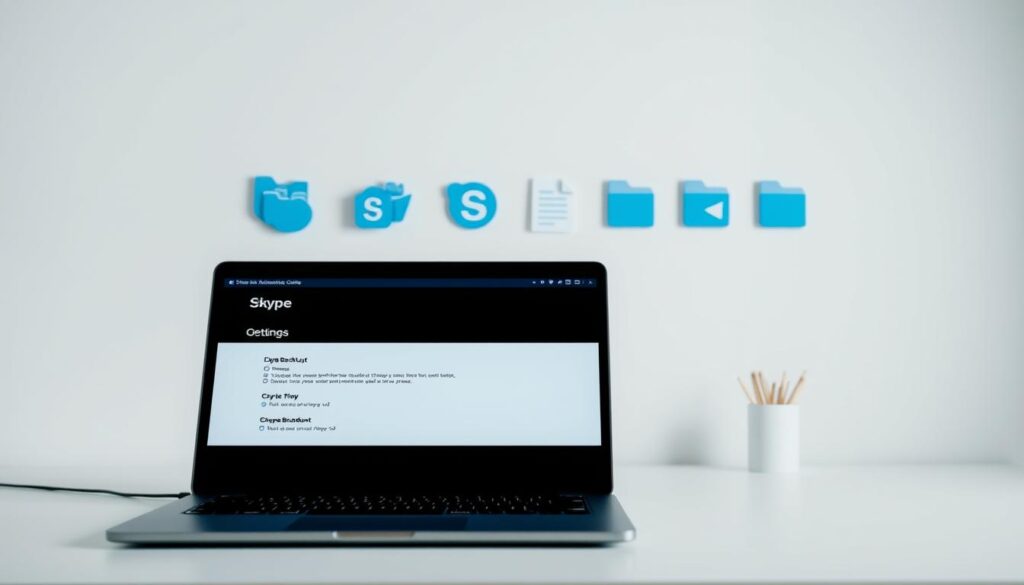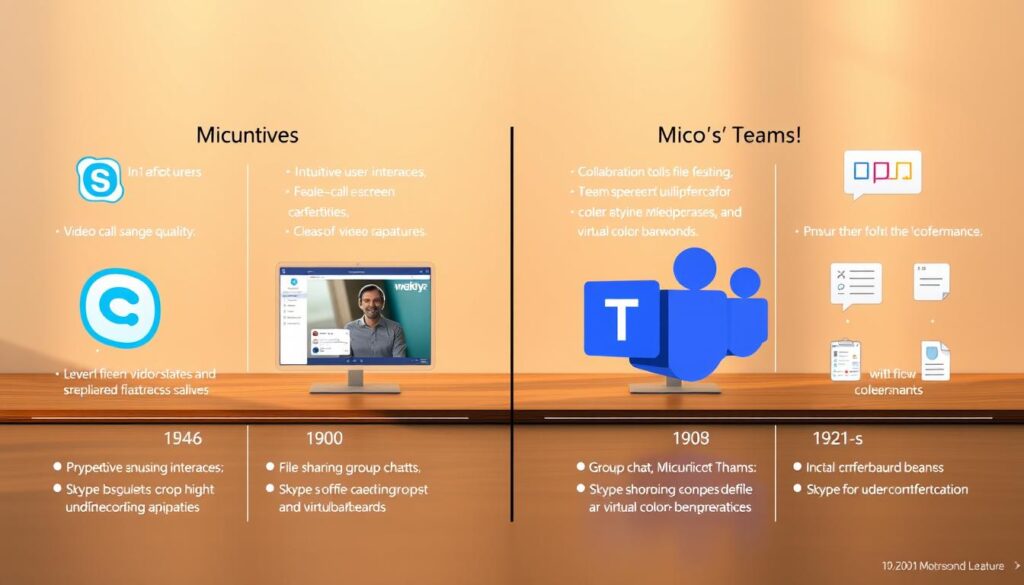
Microsoft is moving forward with its plan for Skype discontinuation, signaling a significant shift in communication platform strategies. As a user, you need to be prepared for this transition that will impact millions of global communication networks.
The Microsoft Skype shutting down process represents a critical moment for personal and professional digital communication. Understanding the upcoming changes will help you navigate this technological transformation smoothly and effectively.
Your current Skype platform will be gradually phased out, which means proactively exploring alternative communication tools becomes essential. Microsoft recommends users start preparing for this transition by evaluating new digital communication solutions that can replace their existing Skype experience.
Staying informed about the shutdown timeline and migration options will ensure you don’t experience interruptions in your digital communication strategies. The goal is to help you seamlessly transfer your contacts, conversation history, and communication workflows to modern platforms.
This guide will walk you through critical steps to understand the Skype discontinuation process, explore migration strategies, and identify the best alternative communication platforms for your specific needs.
Understanding Microsoft’s Decision to Shut Down Classic Skype

Microsoft’s communication strategy has undergone significant transformation, driving the skype obsolescence process. The technology giant recognized the need to streamline its digital communication platforms to meet evolving user expectations and technological advancements.
The reasons for Skype shutdown stem from Microsoft’s strategic shift towards more integrated communication solutions. Teams has emerged as the preferred platform for both personal and professional interactions, offering enhanced features that classic Skype could not match.
You might wonder why Microsoft would discontinue a platform that once dominated online communication. The answer lies in the rapid technological landscape. Modern users demand seamless integration, advanced collaboration tools, and cross-platform functionality – requirements that Teams fulfills more effectively than classic Skype.
Microsoft’s vision focuses on creating a unified communication ecosystem. By consolidating communication tools, they aim to provide users with a more streamlined, efficient experience. The transition represents a strategic move to stay competitive in the fast-evolving digital communication market.
As a user, understanding these changes helps you prepare for the upcoming transition. Microsoft is not simply eliminating a service but repositioning its communication infrastructure to meet current and future digital interaction needs.
Timeline: Microsoft Skype Shutting Down and Migration Schedule

Microsoft has initiated a carefully planned skype shutdown timeline that impacts users worldwide. The migration schedule begins in early 2024, with specific transition phases designed to help users adapt smoothly to new communication platforms.
Your first critical milestone involves understanding the key dates for the Skype discontinuation. Microsoft will progressively disable classic Skype features, starting with reduced functionality for older versions. Personal and business users should prepare for a phased migration process that will ultimately redirect users to Microsoft Teams.
The transition phases are structured to minimize disruption. By mid-2024, classic Skype will completely cease support for messaging and call functions. Users must proactively backup their contact lists and conversation histories before the final shutdown date. Enterprise customers will receive more detailed migration schedules directly from Microsoft.
Your action plan should include reviewing the official Microsoft communication channels for precise dates and preparing your communication strategy. Download necessary data, explore alternative platforms, and familiarize yourself with Microsoft Teams to ensure a seamless transition during this communication platform transformation.
Essential Steps to Backup Your Skype Data Before the Shutdown

When Microsoft prepares to shut down classic Skype, protecting your valuable communication data becomes crucial. Your skype data backup strategy should start with understanding how to export Skype history and preserve skype contacts effectively.
Begin by accessing your Skype account settings. Look for the export option that allows you to download all your conversation histories, chat logs, and contact information. Most users can find this feature under account settings or tools menu.
For comprehensive skype data backup, use the built-in export function. This process will help you save all text conversations, media files, and contact details in a format you can easily store or transfer. Consider creating multiple backup copies on different storage devices for maximum protection.
Preserve skype contacts by downloading a complete contact list. Check that your exported file includes all names, contact information, and communication history. External cloud storage or local hard drives can serve as reliable backup locations for your Skype data.
Timing is critical during this transition. Start your export process early to ensure no critical conversations or connections are lost during the Skype shutdown. Take extra care to verify the completeness of your exported data before deleting any original files.
Transitioning to Microsoft Teams: A Comprehensive Guide

Embarking on your Microsoft Teams transition can seem challenging, but with the right teams setup guide, you’ll navigate the skype to teams migration smoothly. Start by downloading the Microsoft Teams application from the official Microsoft website. Create your account using your existing Microsoft credentials or set up a new profile specifically for professional communication.
Your teams setup guide begins with understanding the interface. Microsoft Teams offers a clean, intuitive workspace designed for seamless collaboration. Navigate through channels, chat functions, and file-sharing capabilities by exploring the sidebar and top menu options. Customize your notification settings to ensure you’re receiving only the most critical updates during your microsoft teams transition.
Migrating your contacts from Skype to Teams is straightforward. Access the contacts section within Teams and import your existing Skype contact list. You’ll find options to sync your address book and transfer communication history. Pay attention to privacy settings to control who can view and interact with your profile during the skype to teams migration process.
For business users, Microsoft provides additional migration tools to help transfer team data, shared files, and communication archives. Take time to explore these advanced features that can streamline your transition and minimize potential disruptions to your workflow.
Remember that practice makes perfect. Spend time familiarizing yourself with Teams’ features, experiment with different communication tools, and don’t hesitate to explore the platform’s extensive help resources. Your successful microsoft teams transition is just a few clicks away.
Key Features Comparison: Classic Skype vs Modern Communication Tools

When exploring modern communication tools, users quickly notice significant differences between classic Skype and newer platforms like Microsoft Teams. Video conferencing capabilities have dramatically evolved, offering more robust features for professional and personal communication.
Skype vs Teams features reveal substantial improvements in collaboration functionality. Microsoft Teams provides enhanced group video calling with up to 100 participants, compared to Skype’s more limited connection capacities. Your team can now share screens, collaborate on documents, and integrate multiple workplace applications seamlessly.
The video conferencing comparison shows Teams delivers superior messaging and file-sharing options. You can now create channels, organize conversations, and store documents within the same platform. This integration eliminates the need to switch between multiple communication tools, streamlining your workflow.
Modern communication tools prioritize security and professional integration. Microsoft Teams offers enterprise-grade encryption, multi-factor authentication, and compliance features that classic Skype never provided. These enhancements make Teams a more attractive option for businesses seeking comprehensive communication solutions.
Your transition from classic Skype to newer platforms represents more than just a software update. It’s an opportunity to embrace more efficient, secure, and collaborative communication technologies that support your personal and professional communication needs.
Business User Migration: Enterprise Solutions and Alternatives
When preparing for the Skype shutdown, businesses need strategic enterprise communication solutions that seamlessly integrate with existing workflows. Microsoft 365 integration offers a powerful transition path for organizations seeking robust communication platforms.
Your business can explore several business Skype alternatives that provide comprehensive collaboration tools. Microsoft Teams emerges as the primary recommended solution, offering advanced features designed specifically for professional environments. The platform supports video conferencing, instant messaging, and file sharing with enhanced security protocols.
Key considerations for selecting enterprise communication solutions include scalability, compatibility with existing software, and collaboration capabilities. Cloud-based platforms like Zoom, Cisco Webex, and Google Workspace present viable alternatives that support remote and hybrid work environments.
Consider evaluating each platform’s specific features aligned with your organization’s communication requirements. Microsoft 365 integration capabilities should be a critical factor in your decision-making process, ensuring smooth data migration and minimal workflow disruption.
Prioritize solutions that offer comprehensive training resources, robust security measures, and flexible pricing structures to support your business’s unique communication needs during this transition period.
Personal User Options: Alternative Communication Platforms
When Microsoft Skype becomes unavailable, you’ll need reliable video calling apps to stay connected with friends and family. Fortunately, numerous cross-platform messaging solutions offer robust communication alternatives that work seamlessly across different devices.
Zoom has emerged as a top skype alternative for personal use, providing high-quality video calls with easy-to-use interfaces. Its free version supports group meetings and one-on-one conversations, making it an excellent replacement for personal communication needs.
WhatsApp and Telegram represent powerful cross-platform messaging applications that support video calling and instant messaging. These apps work smoothly on smartphones, tablets, and computers, ensuring you can connect with contacts regardless of their device or operating system.
Google Meet offers another compelling option for video calling apps, integrating well with Google’s ecosystem. The platform provides free video conferencing with simple screen sharing and chat features, perfect for personal and professional interactions.
Signal stands out as a privacy-focused messaging app with secure video calling capabilities. It supports end-to-end encryption, giving you peace of mind during personal communications while maintaining high-quality connection standards.
Maintaining Your Professional Connections During the Transition
Navigating a communication platform change can be challenging for professionals. Your professional network transition requires strategic planning to ensure seamless connectivity. Start by creating a comprehensive contact update strategy that helps you maintain critical business relationships during this shift.
Updating contact information becomes crucial when switching communication platforms. Reach out to your professional contacts through multiple channels. Send personalized emails explaining the upcoming changes. Provide alternative contact methods like LinkedIn profiles, work email addresses, or new communication platform usernames to keep connections active.
Your transition plan should include a clear communication approach. Consider creating a brief template message that explains the platform change concisely. Highlight the benefits of the new communication tool and how it will improve professional interactions. Proactively share your new contact details with key network members to minimize potential communication disruptions.
Digital networking platforms like LinkedIn can serve as excellent bridges during your professional network transition. Use these platforms to announce your communication platform change and maintain professional visibility. Ensure your profile reflects the most current contact information, helping colleagues stay connected with ease.
Remember that effective communication is about maintaining relationships, not just switching tools. Approach the platform change with a positive, solution-oriented mindset. Your professional network will appreciate transparent and thoughtful communication during this technological shift.
Technical Requirements for New Communication Platforms
Selecting the right communication platform requires careful consideration of several technical specifications. Your network infrastructure plays a crucial role in ensuring smooth video calling and messaging experiences. Most modern communication platforms demand robust network specifications that can handle high-quality video and audio transmission.
When evaluating video calling hardware, you’ll want to focus on devices with HD webcams, quality microphones, and sufficient processing power. Laptops and desktops with at least 8GB RAM and a recent generation processor will provide optimal performance. Smartphones and tablets should have front-facing cameras capable of 720p or 1080p resolution for clear video interactions.
Network specifications are equally important for seamless communication. A stable internet connection with minimum upload and download speeds of 10 Mbps ensures high-quality video calls without interruptions. Wired ethernet connections typically provide more reliable performance compared to wireless networks, especially for professional communication platforms.
Your communication platform requirements will vary depending on your specific needs. Business users might require additional features like screen sharing, virtual meeting rooms, and enterprise-grade security. Personal users can focus on platforms with user-friendly interfaces and cross-device compatibility.
Before migrating, test your current hardware and network capabilities to ensure they meet the technical requirements of your chosen communication platform. This proactive approach will help you avoid potential connectivity issues and ensure a smooth transition.
Tips for a Smooth Migration from Skype to New Platforms
Navigating the transition from Skype to new communication platforms requires strategic planning. Your skype migration tips begin with understanding the core features of your new tool. Start by exploring the interface and familiarizing yourself with key functions before fully switching your communication workflow.
A smooth platform transition demands patience and proactive learning. Download the new communication tool on all your devices and create test conversations with colleagues or friends. This approach helps you practice using advanced features and identify potential technical challenges before your complete migration.
Communication tool troubleshooting becomes essential during platform shifts. Prioritize backing up your existing Skype contacts and chat histories. Verify your account credentials and ensure your network settings support the new platform’s requirements. Check your internet connection stability and update your device’s software to minimize potential integration issues.
Leverage online tutorials and support resources from your chosen platform. Many communication tools offer comprehensive guides and video training to help users adapt quickly. Set realistic expectations for your learning curve and remain open to exploring new communication features that might enhance your professional and personal interactions.



